Analyzing the Spatial Distribution of New York’s Families
Fall 2021
Geographical Information Systems
Columbia GSAPP
Fall 2021
Geographical Information Systems
Columbia GSAPP
Assessing Neighborhoods for their Family-friendliness and Understanding the Spatial Distribution of Existing Families
There are more than 816,000 New York City families struggling to make ends meet in New York City (Kucklick and Manzer, n.d.). The cost of living has been rising faster than income – more and more families are facing economic hardship and struggling to stay in New York City. This study intends to evaluate the accessibility and affordability factors that contribute to whether or not a neighborhood is desirable for families.
With the hopes to provide potential suggestions to increase family-friendliness in certain neighborhoods, this research targets the audience to the Community Districts of New York City, who advise on land use and zoning within the districts.
There are more than 816,000 New York City families struggling to make ends meet in New York City (Kucklick and Manzer, n.d.). The cost of living has been rising faster than income – more and more families are facing economic hardship and struggling to stay in New York City. This study intends to evaluate the accessibility and affordability factors that contribute to whether or not a neighborhood is desirable for families.
With the hopes to provide potential suggestions to increase family-friendliness in certain neighborhoods, this research targets the audience to the Community Districts of New York City, who advise on land use and zoning within the districts.
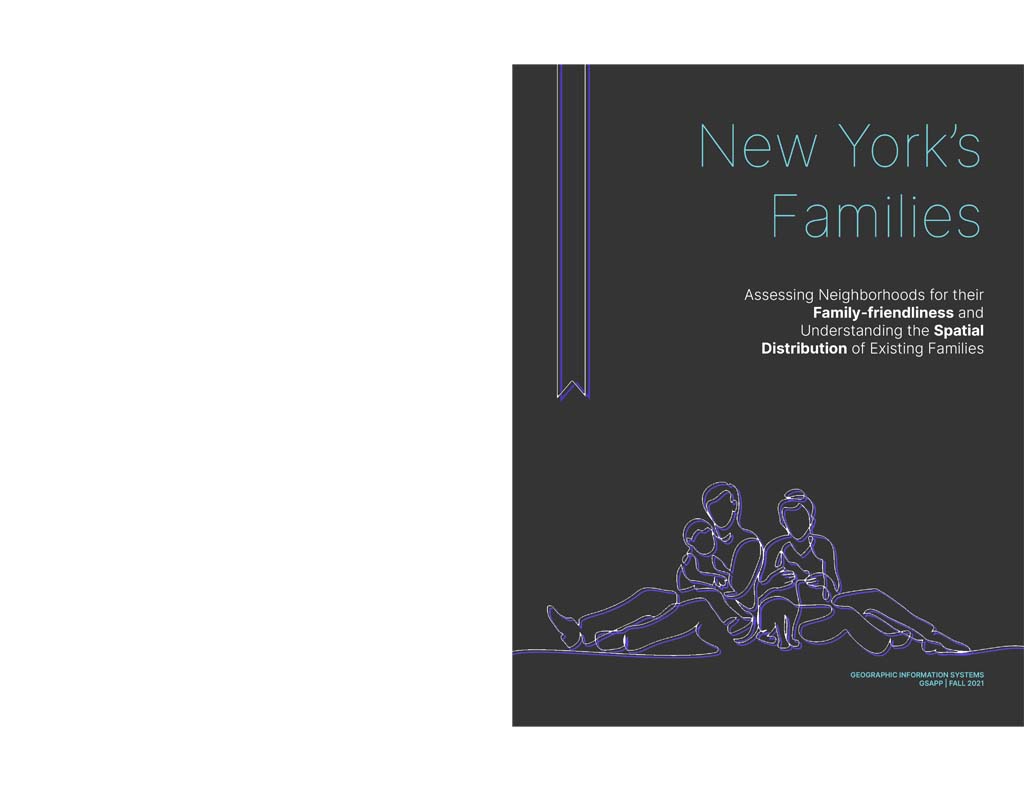

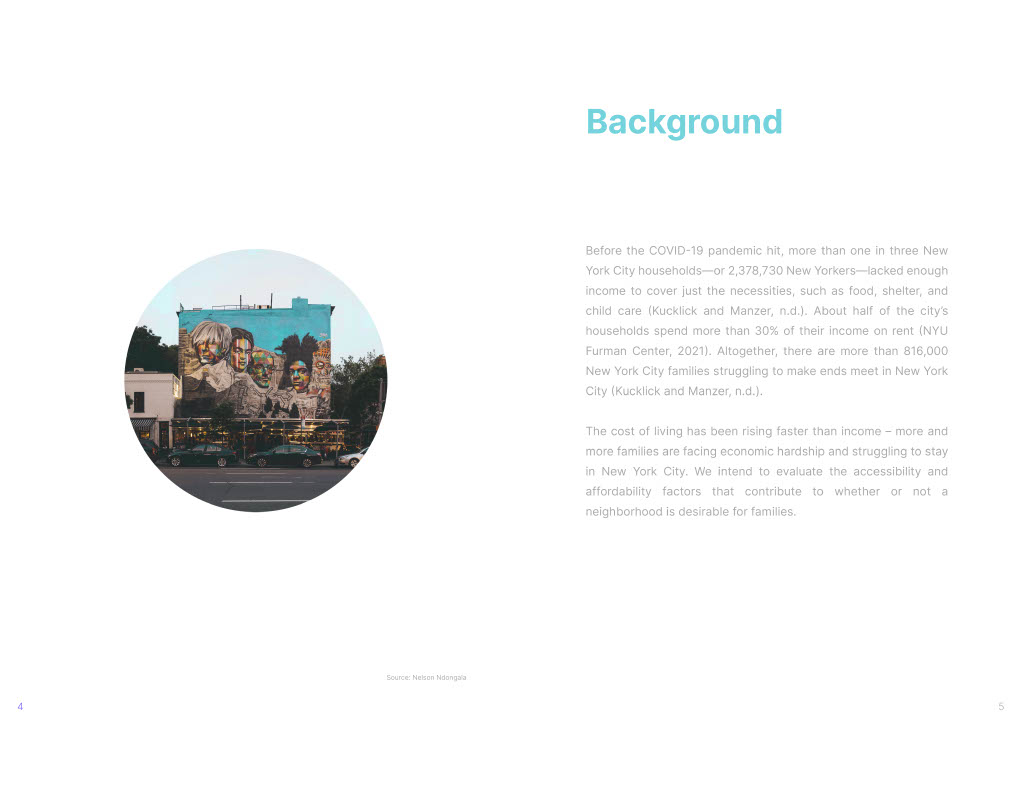

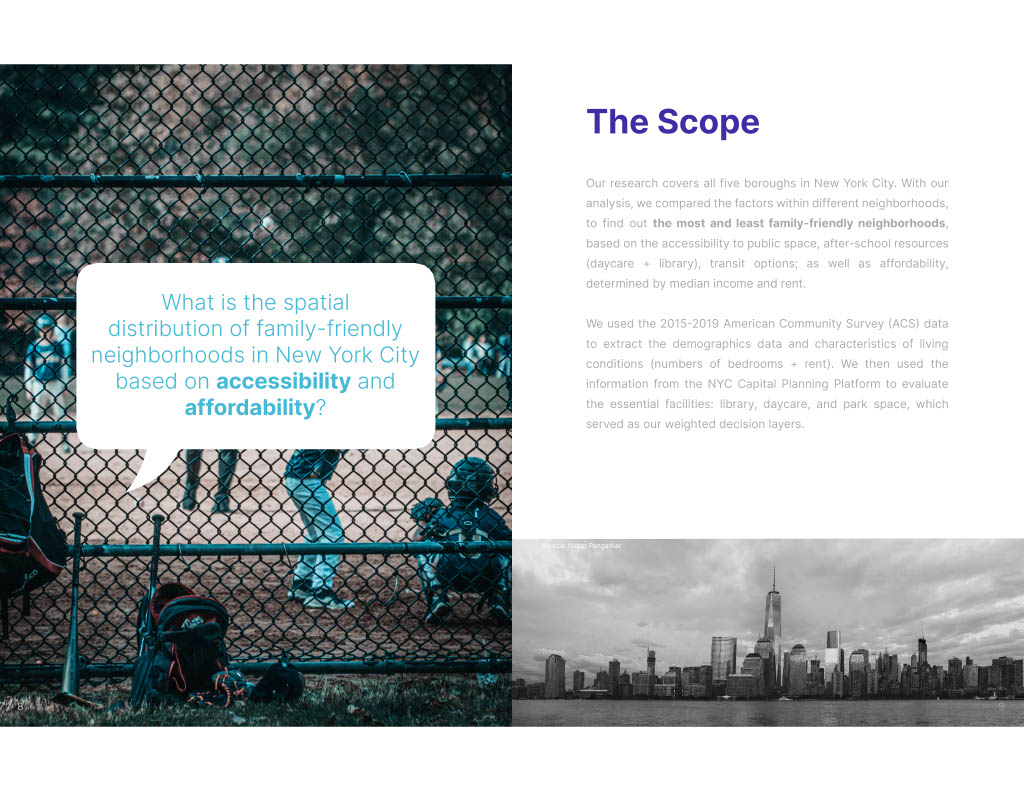

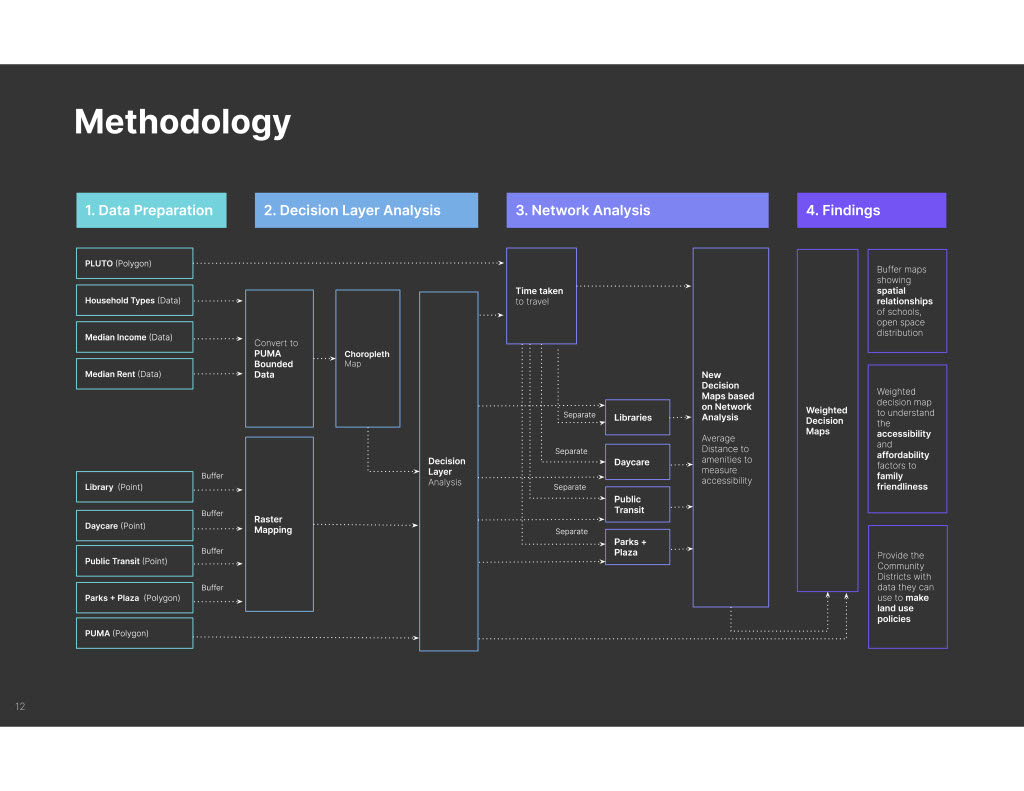


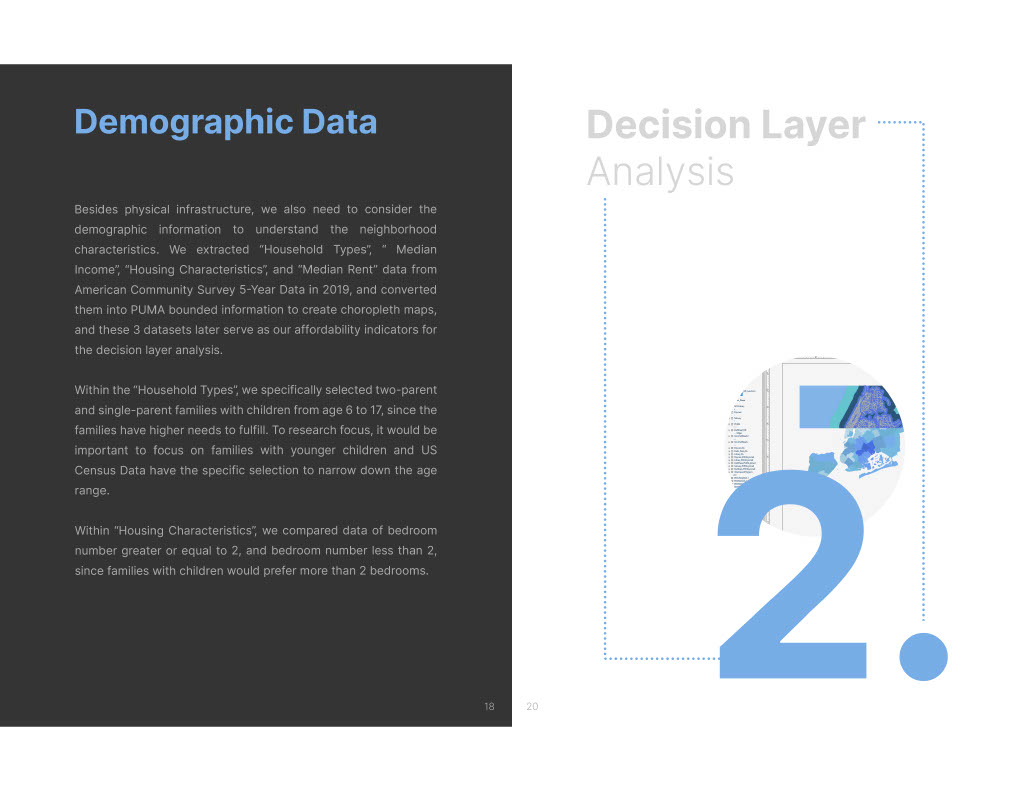
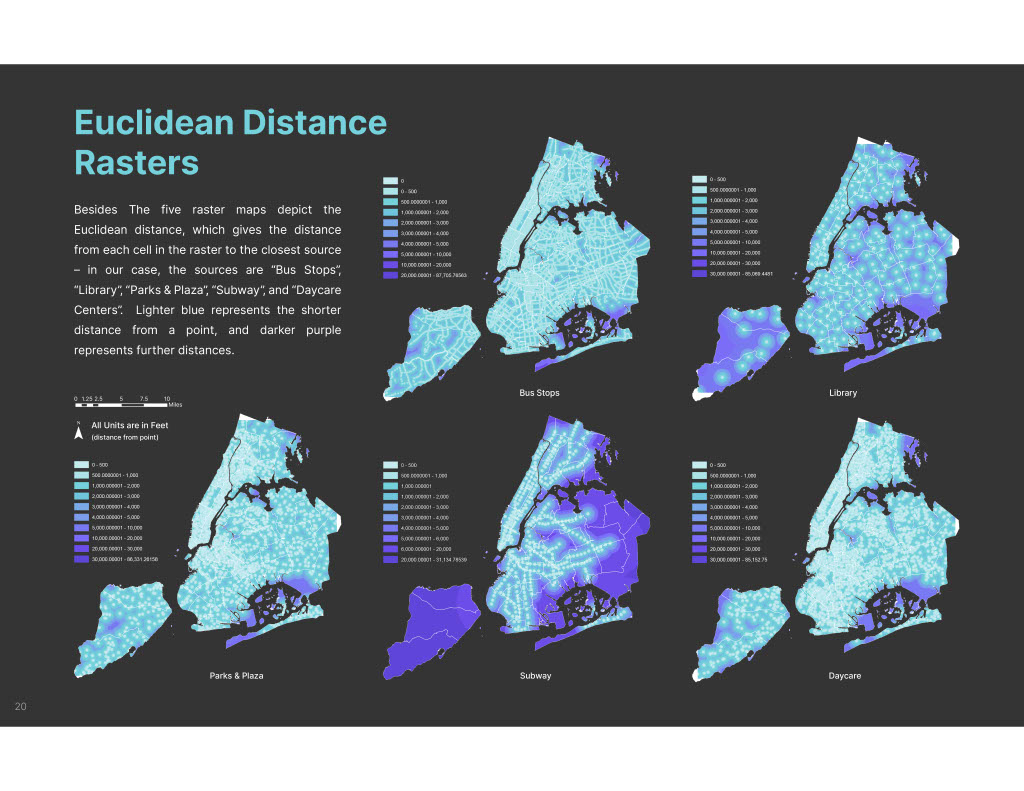


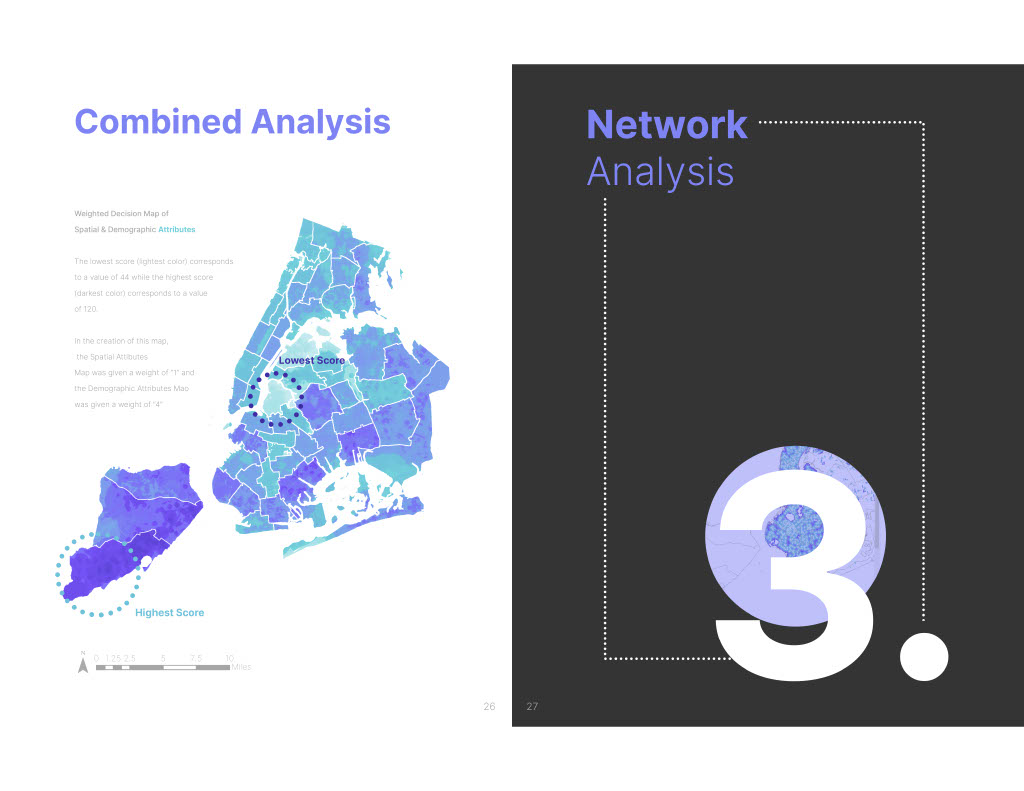

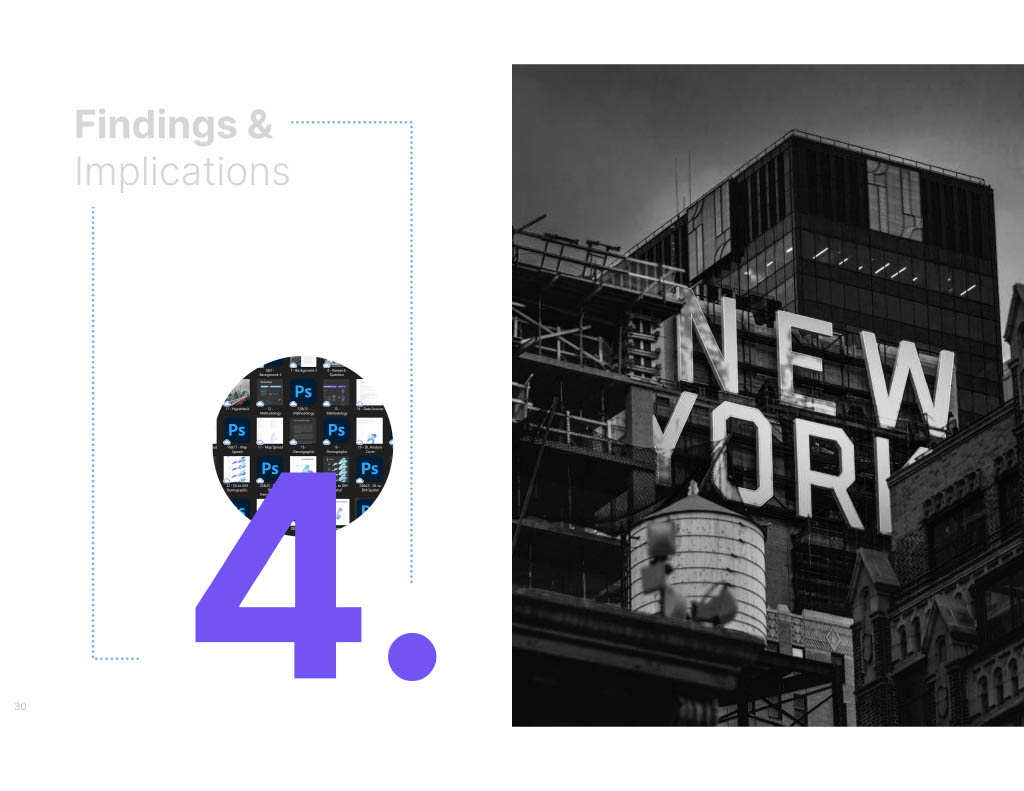
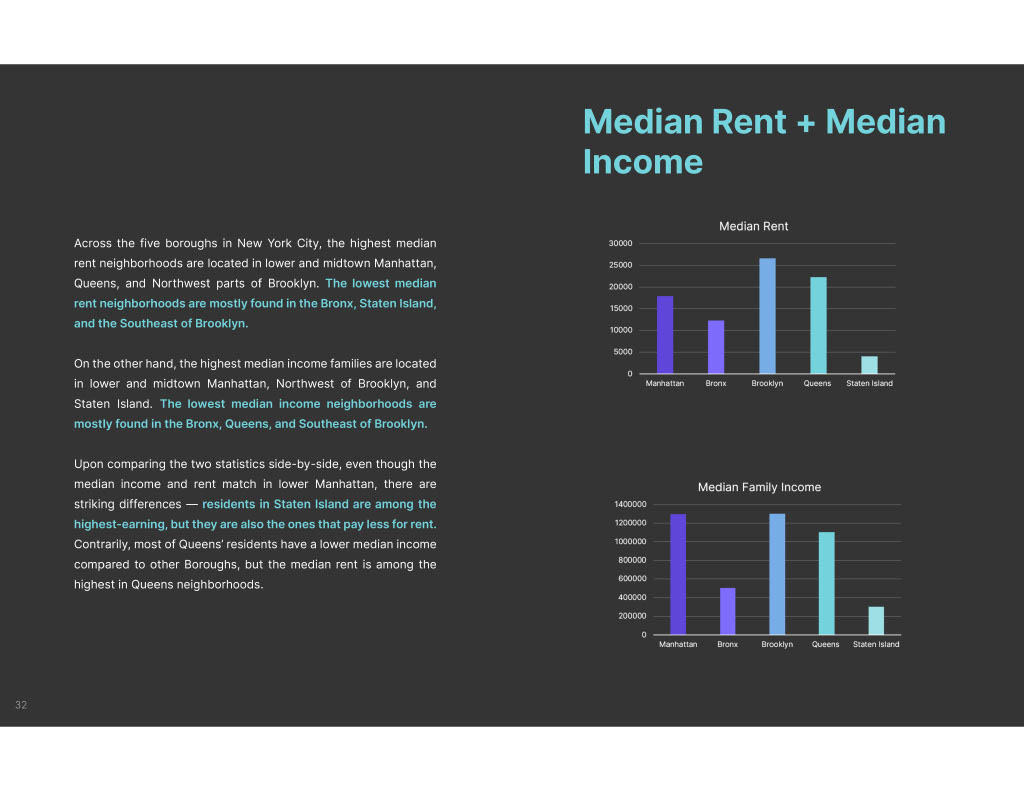

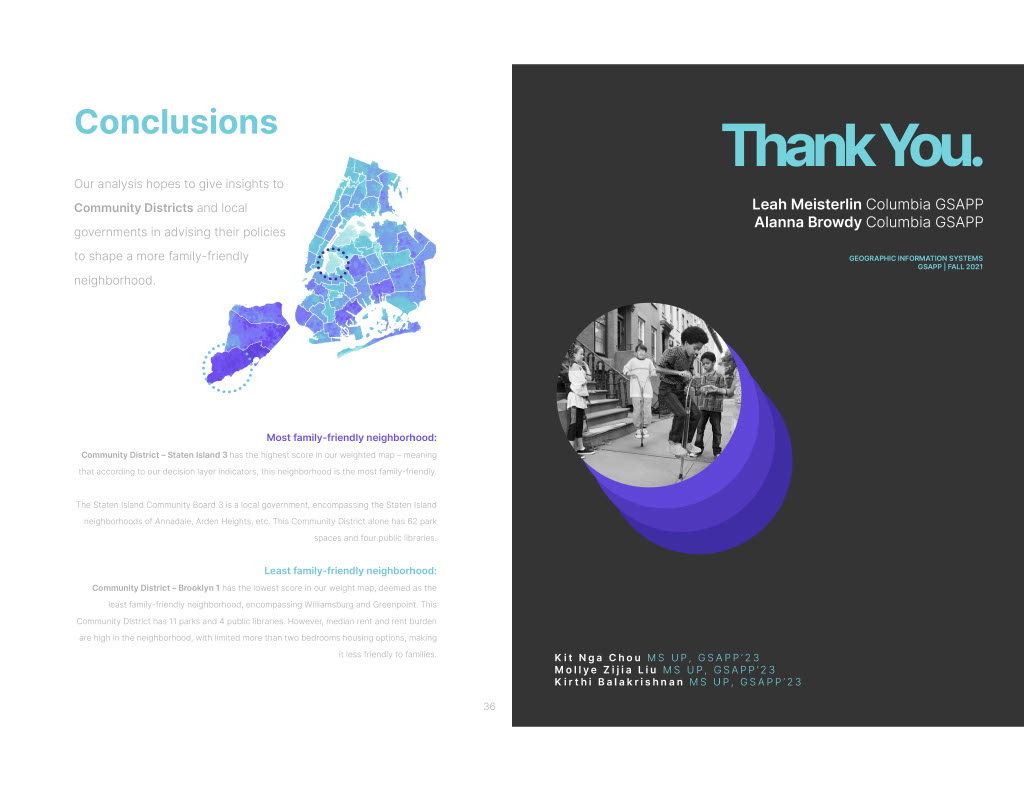
Project by Kirthi Balakrishnan, Kit Nga Chou, Mollye Zijia Liu
Course by Professor Leah Meisterlin